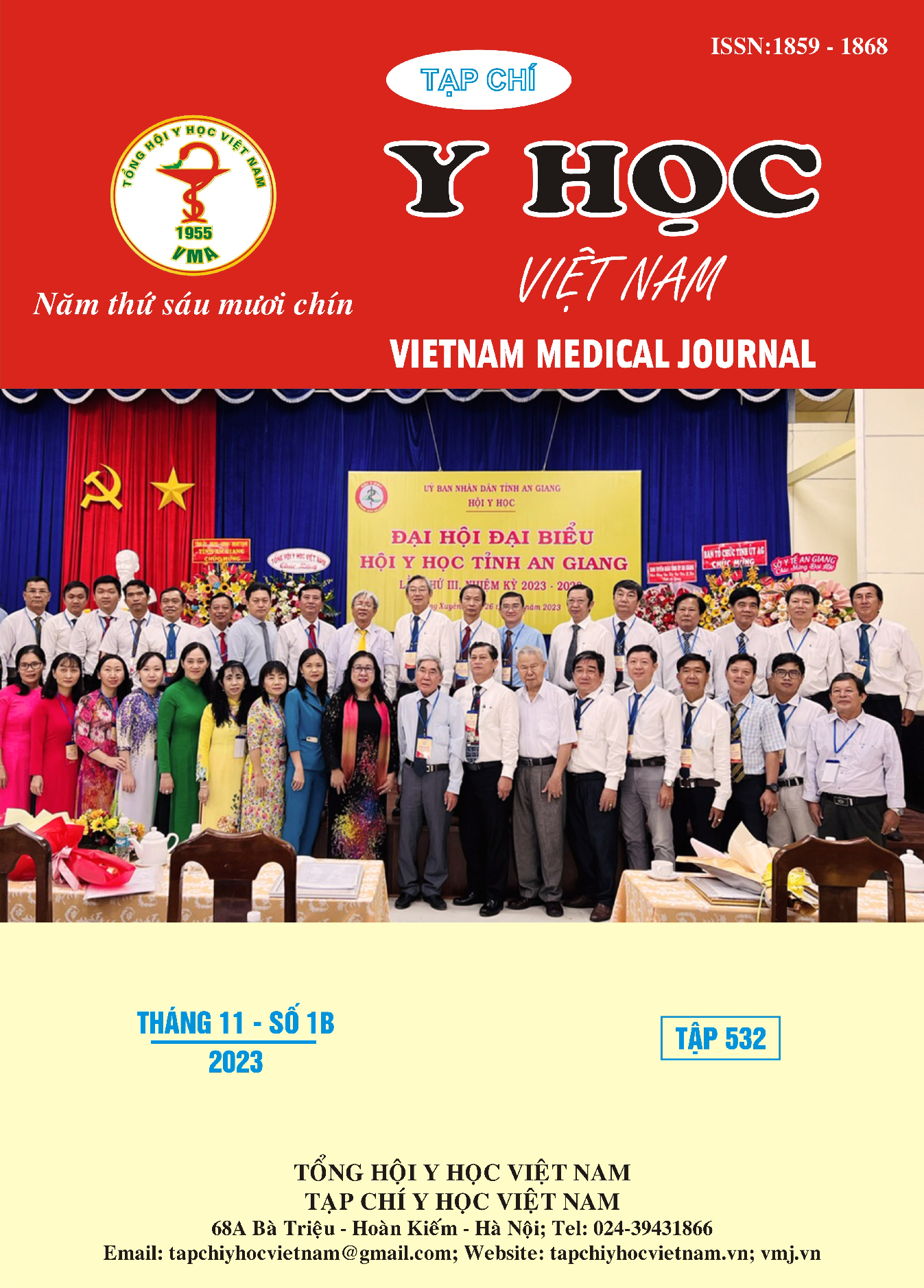DETERMINE SOME COMMON ALLERGENS IN PATIENS WITH ALLERGIC RHINITIS BY THE 60-ALLERGEN TEST PANEL AT HANOI MEDICAL UNIVERSITY HOSPITAL
Main Article Content
Abstract
Background: Allergic rhinitis is an inflammatory disease of the nasal mucosa mediated by IgE antibodies when exposed to environmental allergens through the nasal passages. There are many allergens, and identifying the allergens helps allergic people avoid and limit the allergies. Panel test is a 60-allergen test. The test uses serum samples to determine whether the patient's blood contains allergen-specific IgE (Immunoglobulin E) antibodies, thereby identifying allergens that cause allergies and allergic rhinitis. Objectives: Describe the clinical characteristics of allergic rhinitis patients at Hanoi Medical University Hospital in 2022-2023 and evaluate the rate of common allergens in the above group of patients. Subjects and methods: A descriptive cross-sectional study was held on 92 patients diagnosed with allergic rhinitis. Their panel tests were performed at Hanoi Medical University Hospital from July 2022 to June 2023. Results: The average age was 29.98, the average disease duration was 4.79 years. The patients' signs include itchy nose (82.6%), stuffy nose (92.4%), sneezing (93.5%), and runny nose (81.5%). Symptoms such as pale mucous membranes (100%) and swollen nasal turbinates (93.5%) appeared in most research patients, while nasal polyps were only seen at a rate of 18.5%. Allergens positive with high rates: IgE (100%), House dust mite (47.8%), D.pteronyssinus (53.3%), D.farinae (55.4%), Cockroaches (34.8 %), Shrimp (29.3%), Silkworm pupae (25%). Conclusion: The most common allergens causing allergic rhinitis in the studied patients were house dust, D.pteronyssinus, D.farinae, cockroaches, shrimp, and silkworm pupae. 7,6% of patients were allergic to 1 allergens, 31,5% to 2-4 allergens, and 28,3% to ≥ 5 allergens.
Article Details
Keywords
Allergic rhinitis, panel test 60 allergens
References
2. Nguyễn Đình Bảng (1990), Viêm mũi dị ứng, Nhà xuất bản Thành phố Hồ Chí Minh
3. Vũ Công Cường, Vũ Minh Thục (2001), Viêm mũi dị ứng, Cập nhật khoa học Hội nghị Tai mũi họng tại Viện Tai mũi họng trung ương.
4. Phan Quang Đoàn (2009), Viêm mũi dị ứng, dị ứng miễn dịch lâm sàng, Nhà xuất bản giáo dục Việt Nam, tr.52-65.
5. Nguyễn Thúy Hạnh (2007), Tỷ lệ dị ứng với một số dị nguyên đường hô hấp ở người bệnh Hen phế quản và Viêm mũi dị ứng, Tạp chí Y học lâm sàng, bệnh viện Bạch Mai, vol, số 12.
6. Nguyễn Trọng Tài (2010), Nghiên cứu điều trị giải mẫn cảm bằng đường dưới lưỡi ỏ bệnh nhân Viêm mũi dị ứng do dị nguyên Dermotophagoides Pteronyssinus, Luận án tiến sỹ Y học.
7. Trần Quốc Tuấn (2013), Xác định tỷ lệ Viêm mũi dị ứng và đánh giá hiệu quả của miễn dịch đặc hiệu đường tiêm dưới da bằng dị nguyên Dermotophagoides Pteronyssinus, Luận văn Bác sỹ chuyên khoa cấp II, Đại họ Y Hà Nội
8. Boggs PB (2000), Viêm mũi dị ứng – Tài liệu dịch tiếng Việt, Nhà xuất bản Y học, Hà Nội.
9. Trần Thái Sơn (2018), Nghiên cứu đặc điểm lâm sàng, cận lâm sàng và đánh giá hiệu quả điều trị miễn dịch đặc hiệu ở trẻ 6-14 tuổi mắc bệnh Viêm mũi dị ứng do dị nguyên Dermotophagoides Pteronyssinus, Luận án Tiến sỹ Y học, Đại học Y Hà Nội.
10. Bousquet J et al (2008), Allergic Rhinitis and its Impact on Asthma (ARIA), Allergy, vol.63,8-160.


